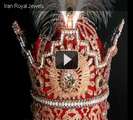Visit of Esfahan, Iran.
Esfahān or Isfahan (historically also rendered as Ispahan, Old Persian: Aspadana, Middle Persian: Spahān, Persian: اصفهان Esfahān), located about 340 km south of Tehran at 32°39′5″N, 51°40′45″ECoordinates: 32°39′5″N, 51°40′45″E, is the capital of Esfahan Province and Iran's third largest city (after Tehran and Mashhad). Esfahan has a population of 1,600,554 (2007 calculation).
Esfahan is located on the main north-south and east-west routes crossing Iran, and was once one of the largest cities in the world. It flourished from 1050 to 1722, particularly in the 16th century under the Safavid dynasty, when it became the capital of Persia for the second time in its history. Even today, the city retains much of its past glory. It is famous for its Islamic architecture, with many beautiful boulevards, covered bridges, palaces, mosques, and minarets. This led to the Persian proverb Esfahān nesf-e jahān ast: "Esfahan is half of the world".
The Naghsh-e Jahan Square in Esfahan is one of the biggest city squares in the world and an outstanding example of Iranian and Islamic architecture. It has been designated by UNESCO as a World Heritage Site. The city also has a wide variety of historic monuments ranging from the Sassanid to the Safavid dynasties. Remaining Islamic architectural sites were built from 11th to the 19th century while older pre-Islamic monuments date back to 1000 B.C.
12.1999The Naghsh-e Jahan Square in Esfahan is one of the biggest city squares in the world and an outstanding example of Iranian and Islamic architecture. It has been designated by UNESCO as a World Heritage Site. The city also has a wide variety of historic monuments ranging from the Sassanid to the Safavid dynasties. Remaining Islamic architectural sites were built from 11th to the 19th century while older pre-Islamic monuments date back to 1000 B.C.
VALPARD FILMS
![]()





No comments:
Post a Comment